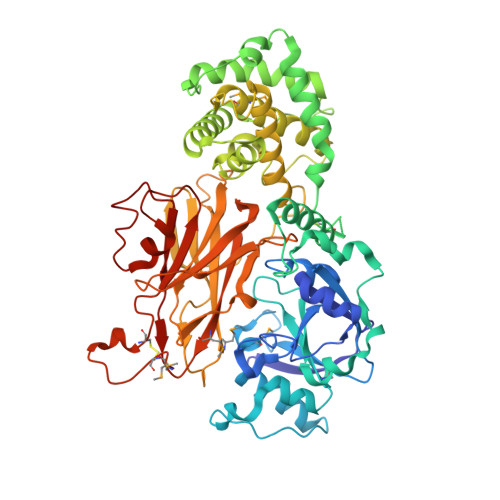Structures of distant diphtheria toxin homologs reveal functional determinants of an evolutionarily conserved toxin scaffold.
Sugiman-Marangos, S.N., Gill, S.K., Mansfield, M.J., Orrell, K.E., Doxey, A.C., Melnyk, R.A.(2022) Commun Biol 5: 375-375
- PubMed: 35440624
- DOI: https://doi.org/10.1038/s42003-022-03333-9
- Primary Citation of Related Structures:
7RB4, 7RI3 - PubMed Abstract:
Diphtheria toxin (DT) is the archetype for bacterial exotoxins implicated in human diseases and has played a central role in defining the field of toxinology since its discovery in 1888. Despite being one of the most extensively characterized bacterial toxins, the origins and evolutionary adaptation of DT to human hosts remain unknown. Here, we determined the first high-resolution structures of DT homologs outside of the Corynebacterium genus. DT homologs from Streptomyces albireticuli (17% identity to DT) and Seinonella peptonophila (20% identity to DT), despite showing no toxicity toward human cells, display significant structural similarities to DT sharing both the overall Y-shaped architecture of DT as well as the individual folds of each domain. Through a systematic investigation of individual domains, we show that the functional determinants of host range extend beyond an inability to bind cellular receptors; major differences in pH-induced pore-formation and cytosolic release further dictate the delivery of toxic catalytic moieties into cells, thus providing multiple mechanisms for a conserved structural fold to adapt to different hosts. Our work provides structural insights into the expanding DT family of toxins, and highlights key transitions required for host adaptation.
Organizational Affiliation:
Molecular Medicine Program, The Hospital for Sick Children Research Institute, 686 Bay Street, Toronto, M5G 0A4, ON, Canada.

























